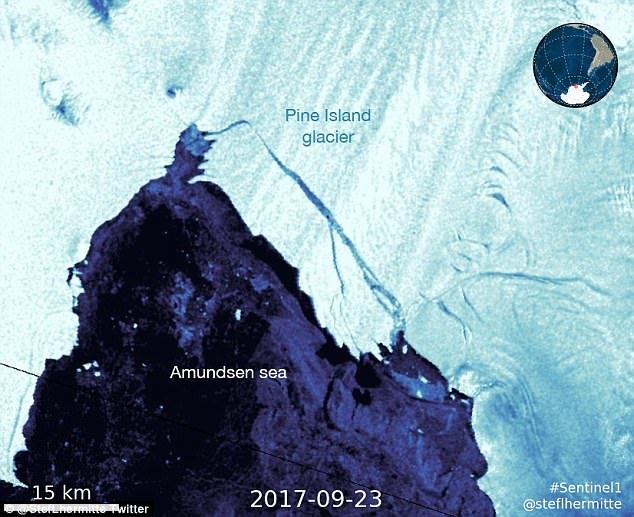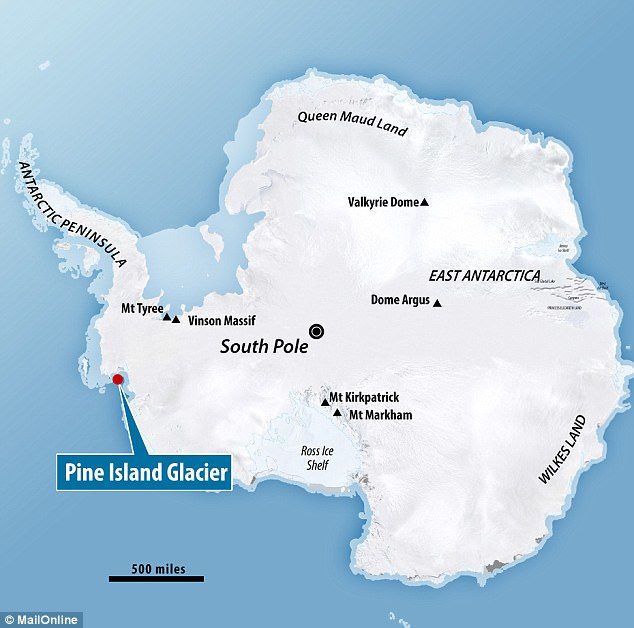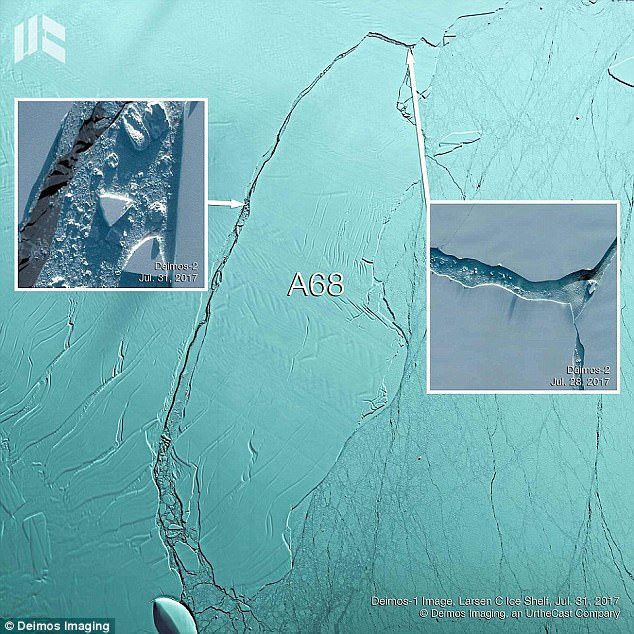
The new break-off, which measures 103-square-mile (266 sq km), follows the release of an iceberg the size of Delaware from Antarctica's Larsen C ice shelf in July.
Warming waters around the continent may be melting the enormous ice blocks from underneath, causing them to break free.
Experts say the location from which the iceberg broke off is of particular interest. Most of the time, icebergs break free from glaciers around the edges, but this most recent departure - from western Antarctica's Pine Island Glacier - has stemmed from an interior section. This is unusual, and is not the first time the glacier has exhibited this behaviour in recent years, with a 224-square-mile (580 sq km) interior segment breaking off in 2015. Experts claim it could be the result of warming ocean waters melting the ice from below, destabilising it.
Satellite observation specialist Dr Stef Lhermitte, from Delft University of Technology in the Netherlands, first reported the new iceberg on Twitter. He said the glacier's latest break-off is the fifth biggest Antarctic calving event since 2000.
He tweeted: 'Breaking news from Pine Island Glacier, which lost 267km2 of icebergs today, after the internal crack resulted in a large calving event
Expert Stef Lhermitte took to Twitter to report the huge calving. He posted an animation showing how the area has progressed since 2013, including the calving og another huge iceberg from the region in 2015
The expert added that satellite imagery 'shows the Pine Island glacier calving clearly and seems to indicate that the iceberg is falling in pieces.' Recent ice chunks have broken away from a floating part of the glacier, meaning they do not directly contribute to sea level rises.
The loss of these barriers could see land ice break away from the continent, resulting in irreversible changes to Earth's oceans. Pine Island Glacier could raise sea levels by 1.7 feet (0.5 metres) if allowed to completely melt, the Washington Post reports.

Last week an international agreement was put in place to protect the area of ocean left exposed.

The protected area is the first to benefit from an international agreement in 2016 by the Commission for the Conservation of Antarctic Marine Living Resources (CCAMLR). It allows research to be undertaken in the area, without any impact from commercial fishing, to address questions relating to how biological communities develop over time, and how new species colonise previously ice-covered areas.



Reader Comments
to our Newsletter